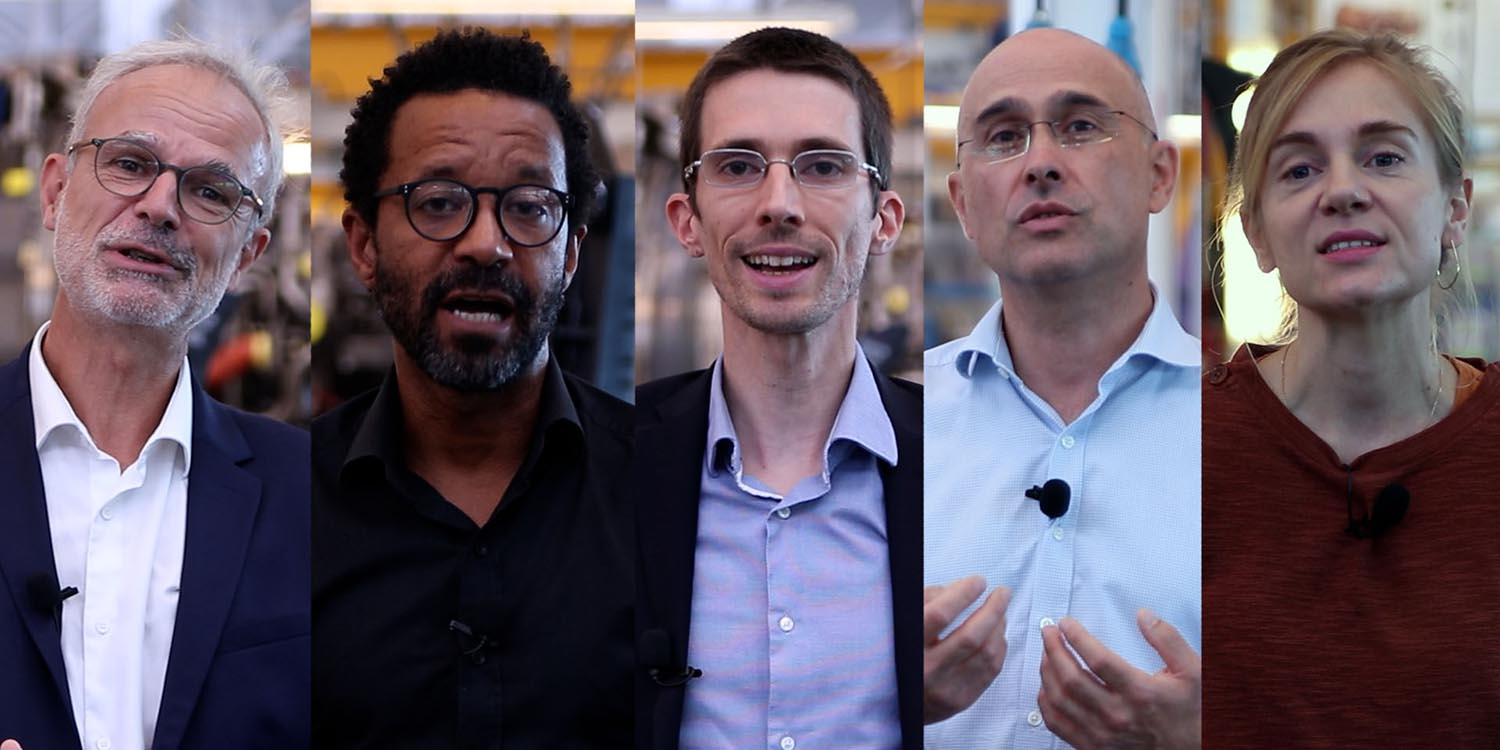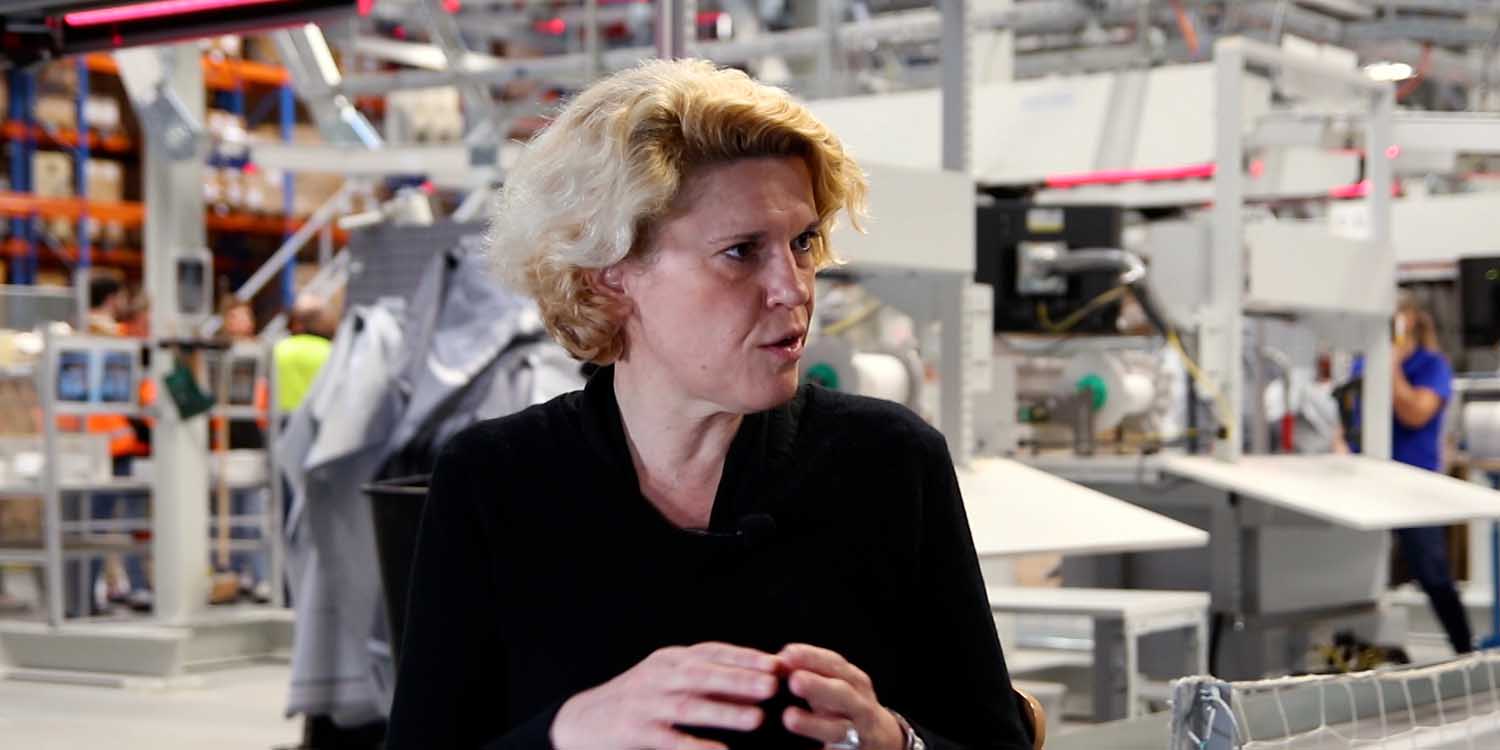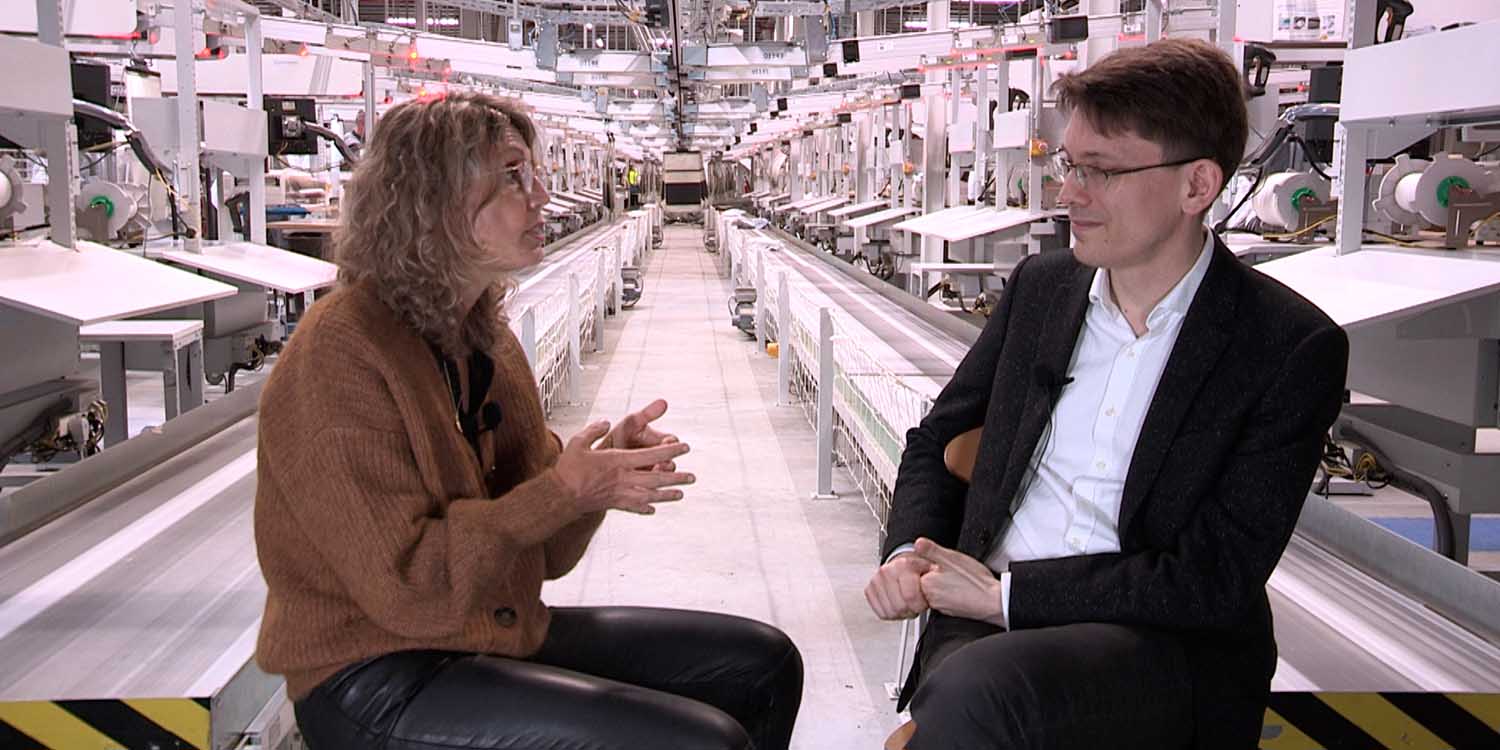00:00:00 Introduction to Patrice Fitzner.
00:01:15 Fitzner’s transition from automotive to logistics at La Redoute.
00:02:39 What Patrice enjoys about the job.
00:03:25 Historical overview of the site’s foundation.
00:04:47 Inquiry about technological solutions for business needs.
00:05:37 Explaining the choice of technology and problem approach.
00:06:46 Importance of robotics in maintaining peak productivity.
00:07:31 Site development and capacity planning for peak demand.
00:08:43 Question on biggest challenge and tendencies for upcoming decade.
00:09:51 Shift of challenge from fulfillment to distribution.
00:10:57 Detailing the process of managing barcodes in logistics.
00:12:05 Advice for young engineers entering logistics.
00:13:01 Technology and innovation in logistics.
00:14:03 Importance of transversality and day-to-day pressure.
Summary
In an interview conducted by Joannes Vermorel, founder of Lokad, Patrice Fitzner, Logistics Director at La Redoute, discusses his role, including managing 500 people and overseeing logistics of customer orders. Despite a fascination with high-tech robots, Fitzner shares that they are impractical for La Redoute due to space constraints and the requirement for a compact site. Instead, La Redoute uses the height of their building for efficiency. Discussing future logistics challenges, Fitzner anticipates a shift to last-mile deliveries with investments in transportation and data management. He also provides advice to young engineers considering a career in logistics.
Extended Summary
The conversation takes place in Roubaix, France, at an industrial site of La Redoute, a client of Lokad, a supply chain optimization company. Joannes Vermorel, founder of Lokad, conducts an interview with Patrice Fitzner, Logistics Director of La Redoute.
Patrice, who has been working for La Redoute since 2010, recounts his journey. Initially part of the automotive industry, he moved to La Redoute to help revolutionize its logistics system, implementing strategies and knowledge from his previous industry.
He oversees the flow of customer orders and goods from order placement to final delivery, managing the logistics of around 30 items from an outsourcing location near Valencia. His responsibilities also extend to managing inbound and outbound flows and customer deliveries.
Patrice asserts that while his job is technical and project-oriented, its core is management. With over 500 people under his wing, his role entails empowering his team and providing them with a clear understanding of their roles in customer satisfaction.
The conversation shifts to discussing the industrial site itself, an epitome of modernization despite the company’s 187-year history. Patrice explains how they sought a solution to manage 3,500 orders per hour, hold over 300,000 items in stock, and achieve two hours of fulfillment time. The challenge was amplified by the physical constraints of the site, 40,000 square meters and 12-10 meters high.
In finding a solution, La Redoute didn’t aim to purchase a pre-existing technological solution but rather required a solution to match their flow management needs. They surveyed the market to understand the technological possibilities.
Joannes acknowledges the fascination in mainstream media with high-tech robots, citing Amazon’s marketing strategy that paints a futuristic picture.
Vermorel opens the conversation by pondering the current technological advancements in logistics, particularly emphasizing the widespread fascination with robots. Despite the absence of robots in La Redoute’s operations, Vermorel acknowledges a significant level of mechanization and productivity. He invites Fitzner to share his perspective on this technology choice.
Fitzner explains that their approach is dictated by their physical infrastructure and product range, which consists of approximately 300,000 items. To accommodate this range, they require a compact site. Robots, according to him, would demand extra space, hence they leverage the entire height of their building to maintain efficiency. They achieve a peak capacity of 12,000 items per hour with around 100 employees, which he suggests might be challenging to attain with robot technology.
The conversation shifts to event-specific demand surges, with Vermorel noting the influence of Black Friday, originally a U.S. phenomenon, now significant in France as well. Fitzner explains that La Redoute designed its site with such peak periods in mind. Their maximum order capacity is 3,500 orders per hour, calculated based on the variance they observe. To handle peaks, they add a third shift, and temporary workers are brought on board to help.
Reflecting on his professional journey, which began at La Martinoise (La Redoute’s old logistic site), Fitzner acknowledges the vast transformation in logistic activities over the past decade. When asked about the future challenges for logistics, he predicts that the focus will shift from fulfillment to last-mile deliveries, considering environmental challenges. He anticipates significant investments in transportation and data management to improve last-mile deliveries and provide better customer care. He envisions that data utilization will play a significant role in notifying customers about any disruptions during delivery.
Vermorel interjects, expressing his keen interest in the role of data in this context, noting that the physical site of the logistics operation is covered in optic fibers, indicating an enormous flow of data. He sees this data as a diagnostic tool for identifying and rectifying problems within the logistical operation.
In response, Fitzner differentiates between two types of data used in their logistics operation. The first is technical data, concerning potential issues within the process, and the second relates to product and customer quality. He explains that in logistics, they don’t manage products but rather manage barcodes. If something is wrong with the barcode, it could lead to issues with customer recognition or reformation. Therefore, they need to have robust traceability at every step to identify where the problems occur. According to Fitzner, the ability to have this kind of data allows them to make daily improvements and reduce the rate of defaults for the customer.
As the conversation shifts, Vermorel mentions that Lokad TV’s audience includes many young engineers, as evidenced by the nature of the questions asked on their platform. He seeks advice from Fitzner for these young engineers looking to start a career in logistics.
Fitzner identifies logistics as a promising field for industrial engineers. He states that logistics offers a wide range of job roles in project teams and management. He notes that the field is undergoing significant investment, making it an exciting time for those who enjoy implementing new technology and processes. He further emphasizes that logistics, being a field with considerable investment, offers the opportunity to work on interesting projects.
When asked about the qualities he values in his team, given his role overseeing a large group of 500 individuals, Fitzner mentions curiosity, the ability to work as part of a team, and the ability to handle daily pressures as crucial. He emphasizes that logistics is an ongoing, non-stop flow of operations and therefore requires constant attention to ensure customer satisfaction.
The interview concludes with Vermorel thanking Fitzner for his insights, indicating that the conversation will continue with other guests from La Redoute in future episodes.
Full Transcript
Joannes Vermorel: As you have noticed, we are not in Kansas anymore. We are not exactly in the Lokad offices; we are in Roubaix in the north, or more precisely, a city in the north of France. I’m delighted to be at an industrial site of La Redoute, which has been a client of Lokad for a couple of years. Today, it is a pleasure for me to be invited by Patrice Fitzner, who happens to be the Logistic Director of La Redoute. Could you tell us a little bit about your career, what brought you to La Redoute more than a decade ago?
Patrice Fitzner: Yes, I have worked for La Redoute since 2010, so more than 10 years now. Before that, I worked in the automotive industry as a director of factories. I decided to move from this industry to La Redoute because, at that time, 10 years ago, there was already a project to change the logistics of La Redoute. Coming from the automotive industry, which is very efficient, I supposed that it would be very interesting to translate my knowledge from the automotive industry to the logistics industry in La Redoute.
Joannes Vermorel: This is a fairly large industrial site. Could you explain the extent of your responsibilities at present day for your role?
Patrice Fitzner: I am responsible for the flow of customer orders and the flow of goods between the customer order and the last delivery order of the customer at home. We also have about 30 items outsourced near Valencia, and I manage all of this, including logistics, inbound and outbound flow, and deliveries to customers.
Joannes Vermorel: You have quite a lot to cover in terms of responsibilities, both literally because the place is quite big, and figuratively. What do you enjoy the most about your responsibilities?
Patrice Fitzner: In the department of logistics, we have more than 500 people. We deal with technical issues and projects, which are part of the job, but the main purpose of my role is management. My role is to engage people and share with them the spirit of the customer, to give them a sense of meaning and understanding of their role in the overall customer satisfaction.
Joannes Vermorel: La Redoute was founded, I think, about 187 years ago, but clearly this site is not a 19th century setup. This is obviously extremely modern. Could you tell us a little bit about this precise industrial site that is the main hub for the flow of La Redoute?
Patrice Fitzner: Initially, we didn’t want to buy some technical solution. Our requirement was about the flow. We wanted to manage 3,500 orders per hour with more than 300,000 references in stock and with two hours of fulfillment time. That was the prerequisite of the product. Then we looked at the market and asked, “How can we achieve this?” We also considered the size of the site, with 40,000 square meters, 10 meters high, that is usable, and asked the market what kind of technology could help us meet these objectives.
Joannes Vermorel: I’ve been observing the logistics market for quite a while and what you often see in the mainstream media are super fancy robots. Amazon is obviously making an enormous marketing move with them. It’s very futuristic and impressive, at least from a non-specialist’s perspective. Here, I see no robots, but I do notice an enormous level of mechanization. Clearly, this is an intensively mechanized site with a very high level of productivity, even without those small robots around. Could you give us your perspective on this choice of technology and how you approach such a problem?
Patrice Fitzner: Our choice was made based on the building we have and the range of our offer – we stock around 300,000 items. We need to have a very compact site. With robots, you’d use an additional meter or two of the global area. We utilize the full height of our building. One point is about the global peak capacity. We have a peak capacity of 12,000 peaks per hour with almost 100 people on site. It’s very productive. To achieve this kind of peak with a limited number of people, I don’t think robot technology is the best choice.
Joannes Vermorel: That brings me to an interesting phenomenon – Black Friday. Although France is not the United States, we’ve adopted Black Friday, and it has become an enormous event. It’s a good period for La Redoute because it brings a massive surge of orders. What’s your main strategy to cope with this very specific surge in demand, considering there’s Black Friday and a few others during the year?
Patrice Fitzner: When we developed the site, we designed it with peak capacity in mind. The peak is at 3,500 orders per hour. We don’t have this number of orders every day, every hour. It’s the maximum we can handle. It’s also calculated relative to the significant variance we have. Secondly, we work in two shifts. For periods like Black Friday, we add a third shift and have a night shift. That gives us 30% more capacity. We also have temporary workers who help us during these high-demand periods.
Joannes Vermorel: Compared to your personal history, you started at La Martina, which was the old side of La Redoute’s logistics. This site is obviously radically different, much more modern. You’ve seen a remarkable transformation of the logistical activity over the last decade. What do you think is the biggest challenge for the decade to come? What do you see as the core challenges and the main trends for logistics in the future?
Patrice Fitzner: I think industrialization of fulfillment is underway. The next challenges will be about the last-mile deliveries. We have a very big challenge regarding climate change. I anticipate a lot of investment in tracks and data management to better manage last-mile delivery and improve customer care. Using data to anticipate issues during deliveries will be important. I think the challenge is moving from fulfillment to distribution. That will be a very big challenge for the next decade.
Joannes Vermorel: I see that the whole building is literally covered in optic fibers. It seems there is an enormous amount of data that flows, letting you track every single unit in its placement. Do you see data as a tool to diagnose problems and further improve the activity?
Patrice Fitzner: Yes, we have two kinds of data. First, there is technical data that we use to address any technical issues in the process. Second, we have data about products and customer quality. When we detect a quality problem, because we manage barcodes not products in logistics, we are able to trace each step to see where it happened. It’s very important to have data to facilitate daily improvement and reduce the rate of defaults for customers.
Joannes Vermorel: According to YouTube statistics, our audience includes quite a few young engineers. What advice would you give to a young engineer who wants to get started in this area of logistics?
Patrice Fitzner: First of all, I believe logistics is a new area for industrial engineers. We have all kinds of jobs in project management and leadership because we work with a very large number of people. There is a lot of investment today in logistics and supply chain. If you are an engineer, you love to create new things and use new technology. Logistics presents a new game where you can have fun because there are many things you can do with a lot of investment.
Joannes Vermorel: You manage a large team of 500 people. What qualities do you value in the people that work closely with you?
Patrice Fitzner: Curiosity, ability to work in teams, transversality, and ability to work under daily pressure are the qualities I value. In logistics, the flow never stops. You have to be on your subject every day because every day you send orders to customers. To satisfy your customers, you have to be engaged with the activity every day.
Joannes Vermorel: Thank you very much for all those answers. The show must go on, but that will be it for today. We will have other interviews with other guests from La Redoute. Thank you very much.


